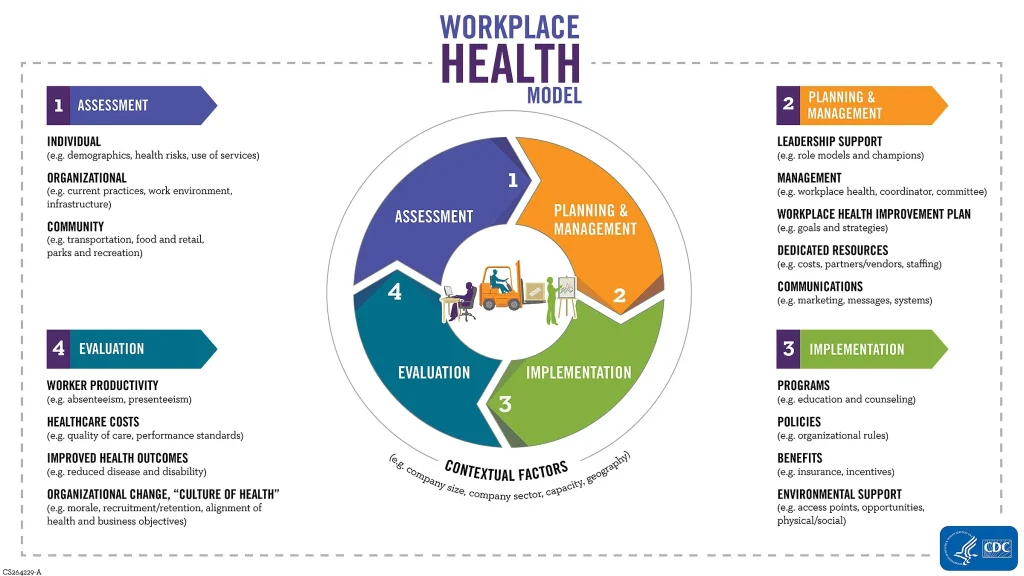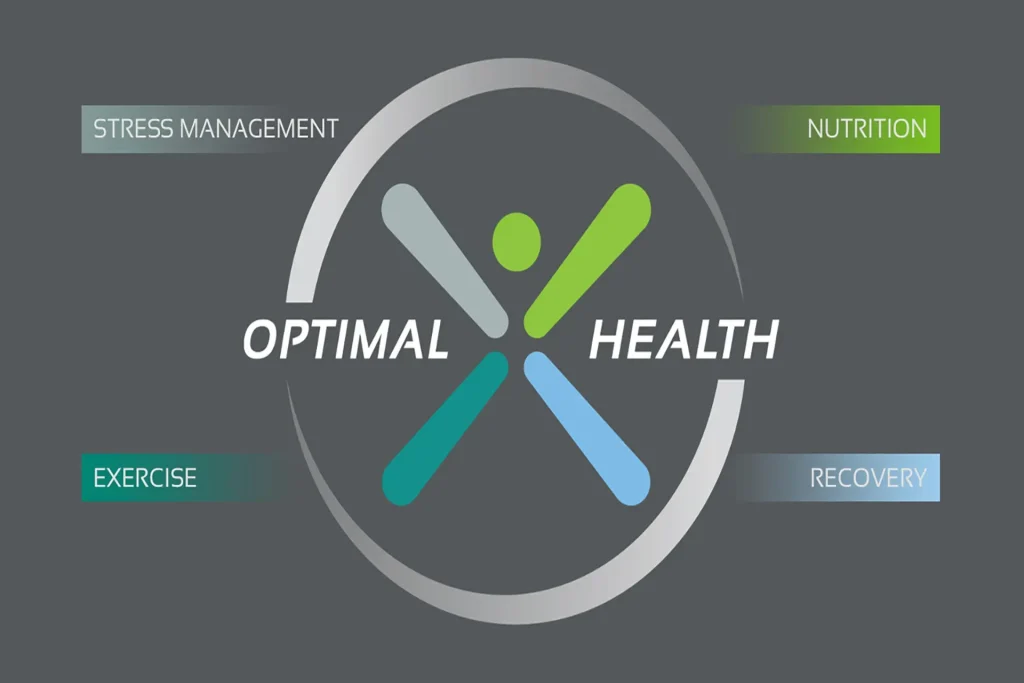Workplace health is a strategic asset that goes beyond buzzwords, shaping how people feel, perform, learn, and stay engaged across teams. When organizations invest in the physical workspace, the policies that govern how people work, and the culture that surrounds daily tasks, they do not just reduce illness; they boost engagement, productivity, and retention, supported by workplace wellness initiatives and leadership commitments for every department, every shift, and every role. In the modern office, ergonomic office design, social connection, and the everyday environment influence how people feel about coming to work, affecting attention, energy, and collaboration. A healthier office translates into fewer sick days, higher collaboration, and a stronger employer brand, while attracting talent who value balance and sustainable performance. This introductory guide outlines practical, scalable actions that align space, policy, and culture to support people at work, with an emphasis on starting small, iterating often, and making health a shared responsibility across teams.
Beyond the explicit label, the idea of a healthy work environment centers on comfort, resilience, and supportive leadership that enable people to thrive. Effective programs blend ergonomic considerations, mental wellness resources, peer support, and clear expectations to sustain performance. By focusing on employee engagement, work-life balance, psychological safety, and accessible spaces, organizations cultivate loyalty and productivity. In practice, design choices, policy guidance, and culture shifts work together to create a durable, vibrant workplace.
Workplace Health: Integrating Ergonomic Office Design with a Healthy Office Culture
Workplace health is enhanced when ergonomic office design and a healthy office culture reinforce each other. An ergonomic environment—adjustable seating and desks, properly positioned monitors, balanced lighting, and sound-conscious layouts—reduces physical strain and fatigue, helping employees stay engaged throughout the day. When these practical improvements are paired with a culture that values well-being, collaboration, and psychological safety, workers feel empowered to contribute more creatively and consistently.
A healthy office culture goes beyond policy; it translates into daily behaviors such as modeling balanced work hours, recognizing effort, and encouraging breaks. Leaders who demonstrate healthy work habits and transparent communication help normalize wellness as a core company value. This combination—ergonomic office design plus a supportive culture—reduces presenteeism, strengthens belonging, and lowers the risk of burnout, all while supporting measurable gains in productivity and retention.
Practical steps to implement this integration include starting with ergonomic assessments and sit-stand options, creating quiet zones to minimize distractions, and improving environmental factors like lighting and air quality. Simultaneously, invest in leadership training on workload management, authentic recognition, and fostering psychological safety. When physical comfort and cultural norms align, teams are more resilient, collaborative, and better equipped to sustain performance under change.
Employee Well-Being, Workplace Wellness, and Mental Health at Work: A Holistic Approach
A holistic approach to employee well-being starts with comprehensive workplace wellness programs that signal health matters and provide accessible resources. By offering optional health screenings, fitness initiatives, nutritious options, and mental health support, organizations create a foundation where employee well-being is a shared priority. This approach aligns with the broader aim of mental health at work by reducing stigma and equipping staff with practical tools to manage stress, build resilience, and maintain focus.
Effective wellness programs are inclusive and adaptable to real-life schedules, including shift work and caregiving responsibilities. A well-designed portal for resources, confidential counseling options, and simple guidance on accommodations helps employees feel supported. Tracking participation, satisfaction, and outcomes—along with qualitative feedback—allows leadership to refine programs and demonstrate the return on investment in terms of lower healthcare costs, reduced absenteeism, and higher engagement.
Beyond programs, fostering a healthy office culture that prioritizes belonging, psychological safety, and open communication reinforces mental health at work. Encouraging flexible scheduling, peer-support networks, and transparent conversations about workload helps normalize well-being as a daily practice. When wellness is embedded into performance conversations and decision-making, employees are more likely to sustain healthy habits, feel valued, and contribute more effectively to organizational goals.
Frequently Asked Questions
How can ergonomic office design enhance workplace health and improve employee well-being?
Ergonomic office design is a core pillar of workplace health. It reduces strain, prevents injuries, and supports focus and comfort, boosting employee well-being and engagement. Practical steps include: adjust chairs with lumbar support and height-adjustable desks to enable sit–stand use; position monitors at or below eye level with ergonomic keyboards and mice; improve lighting and air quality, reduce noise, and create accessible break areas; offer personalized ergonomic assessments to accommodate diverse bodies; and integrate these changes with your broader workplace wellness program while measuring outcomes like sick days and productivity to guide ongoing improvements.
What strategies help build a healthy office culture that supports mental health at work and reduces absenteeism?
A healthy office culture that prioritizes mental health at work starts with psychological safety, transparent leadership, and clear recognition. Key strategies: foster open dialogue about stress and workload; train managers to recognize burnout and model healthy boundaries; provide easy access to mental health resources (counseling, stress management, mental health days) and work to reduce stigma; align with workplace wellness initiatives and offer flexible schedules and caregiver-friendly policies; encourage peer support networks and regular wellness conversations in performance discussions; measure progress with pulse surveys and absenteeism/engagement metrics, and share results to sustain momentum.
| Aspect | Key Points |
|---|---|
| Physical environment and ergonomics | – Ergonomic design reduces injuries and fatigue. – Adjustable seating/desks support sit-stand work. – Proper monitor/keyboard setup and good lighting/air quality. – Noise management, break areas, and movement-friendly spaces. |
| Culture, leadership, and psychological safety | – Culture guides daily behavior toward well-being. – Psychological safety and transparent leadership foster open communication. – Recognition, belonging, and work-life balance boost engagement and retention. |
| Workplace wellness and employee well-being | – Wellness programs signal health matters and provide resources without pressure. – Screening, fitness, nutrition, mental health support, and financial well-being. – Inclusive, voluntary programs designed with employee input. |
| Ergonomic office design and inclusive spaces | – Ongoing adjustments to fit diverse bodies/tasks. – Personalizable chairs/desks, sit-stand options, accessible design. – Biophilic elements and inclusive restrooms/wayfinding. |
| Implementing practical, scalable changes | – Start with high-impact, low-friction changes (30 days, 3–6 months). – Audit current state, quick wins, and structural changes; establish programs. – Systems for measurement and ongoing improvement. |
| Measuring success and sustaining momentum | – Track sick days, turnover, engagement, and healthcare costs. – Use pulse surveys and qualitative feedback; report progress regularly. – Emphasize iterative improvements and accountability. |
Summary
Conclusion: Workplace health is a multidimensional strategy that blends ergonomic design, wellness initiatives, and a healthy culture into a coherent system to support employee well-being. When organizations treat health as foundational rather than optional, they create workplaces where people feel energized, valued, and able to do their best work. The path to a healthier office and culture is iterative, inclusive, and measurable, with small, deliberate changes building toward lasting gains. Ultimately, workplace health benefits not just individuals but the organization, driving engagement, resilience, and stronger performance across teams.



